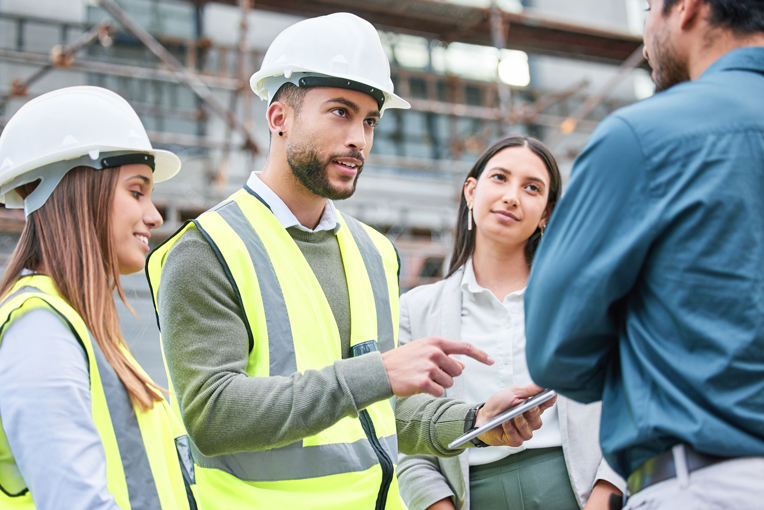
What is Social Value in Construction?
Social value in construction is all about the changes a construction project makes to the local and wider community. It includes immediate impacts – like where you source your materials and labour from – and longer term impacts like low-carbon design and green space integration.
If you haven’t already, it’s worth checking out our Complete Guide to Social Value article before you read the rest of this one. It goes deep into exactly what social value is, and how it can be measured.
Still here? Great, let’s jump in.
Why does social value in construction projects matter?
Social value in construction matters for the same reason social value in general matters – it’s all about making the world a better place for the people who live in it. It’s equally important in both public-sector and private-sector construction projects. But there are a few key reasons to integrate social value into your construction projects.
The public cares about it
If you ask the average person on the street if they care about social value, they’ll probably give you a blank look or shake their head. But, if you ask them if they care about their local community, and how construction projects affect it, you’ll get a much more passionate response.
Your employees care about it
People like working on projects they feel are important. The more positive value you can build into your projects, the more your employees will feel they’re working on something important. They’ll be happier and more productive, and that’s good for business.
The government cares about it
So much so, in fact, that since 2021 it’s been a legal requirement for construction projects to have a social value plan in place. The Construction Playbook, launched in 2020, features social value prominently. So any project you start must integrate social value. The trick is to get the most out of it.
How can I integrate social value into my construction project?
So, you need to include social value in your next project – but how? Actually, there are lots of ways – and there’s a good chance you’re thinking about and doing some of them already. One key thing to consider is that social value needs to be integrated into the construction phase and beyond, so it delivers value long after your work is done and the site is signed off.
Social value planning also needs to take into account your client and their specific goals. An affordable housing development might have very different requirements to a new warehouse for an e-commerce business, but both need social value to be an integral part of the process. Here are a few examples of how you can embed social value in your construction projects.
Social value must be embedded into everything you do
Social value is not skin deep. Paying lip service to it with a few tweaks to your plan is missing the point. Social value needs to be built into every project you do, from start to finish and beyond. Every element of each project should be scrutinised for ways to increase social value and everyone involved should be invested in it too.
Prioritise your social value
That said, you can’t do everything. Not every project lends itself to every way of adding social value. So, work with your clients and local communities to identify how your project can have the biggest impact. Not just now, but in the future.
Be accountable
Don’t hide your social value away. Be upfront with stakeholders like clients and communities about your aims, and explain why you chose them. And be upfront about what you achieve – and where you fail – too.
Measure your social value
Social value is difficult to measure. But, measure it you must. Because otherwise, how do you know whether your efforts are working? There are frameworks to help, and a social value tool, like Loop, is invaluable too.
Integrate social value during the project’s lifespan
Integrating social value into the construction phase of your project means that you’ll start to see positive change almost immediately. Here are a few ways you can do that.
Community employment and skills development
If you’re working on a big project, many jobs are involved. Plan for some of those jobs to go to local residents, to help reduce unemployment. Include apprenticeships and other training opportunities too, so people can upskill for future employment.
Supply chain management
Where you can, source materials and services locally. This helps support local businesses and boosts the local economy. Where you can’t, use sustainable, ethical supply chains to minimise environmental impact and benefit the wider community.
Sustainable building
Wherever possible, use sustainable building techniques. You can use eco-friendly materials, reduce carbon emissions and minimise waste. If you’re working on several large projects at once, the economies of scale can multiply the impact of sustainable construction.
Engage with the community
From the very beginning of the project, make sure you engage fully with the communities that will be affected. And it must be genuine engagement, factoring their thoughts and concerns into the project plan.
Integrate social value into the project long-term
The construction phase of the project is only the beginning. The real, long-term social value impact is built into the project itself and can benefit communities for decades. What you can do will depend on the scale and scope of the project, but these are a few things to consider.
Include green spaces
Using green spaces – like parks, grass lawns and woodland – in construction brings a host of benefits. They improve air quality and support biodiversity and wildlife. They also provide the local community with much-needed recreation spaces, and have proven positive impacts on mental well-being.
Focus on the infrastructure
Factor sustainable infrastructure into the design. Consider things like public transport and walking and cycling routes, as well as place design that supports local services to reduce reliance on driving.
Remember social spaces
Including social spaces – like libraries, parks, community centres and sports facilities – helps to create a sense of community and place, and encourage social interaction.
Enable healthy living
Designing buildings with good ventilation, natural light and low pollution levels helps to promote healthy living.
Preserve heritage and character
Incorporating an area’s existing character into a project can help the community retain its identity while the new development creates its own. This is particularly crucial for redevelopment projects.
Social value tools
If you’re serious about embedding social value into your construction projects you’ll need to start from the beginning and build it into your projects from the ground up. You’ll need a good set of tools to help you plan and manage your social value.
And that’s exactly what we do at Loop. Our social value calculator tool helps you measure your social value accurately, and we’re on hand to help you build your social value solutions.
We’re only an email away if you want a chat about how we can help.
Book a free demo










